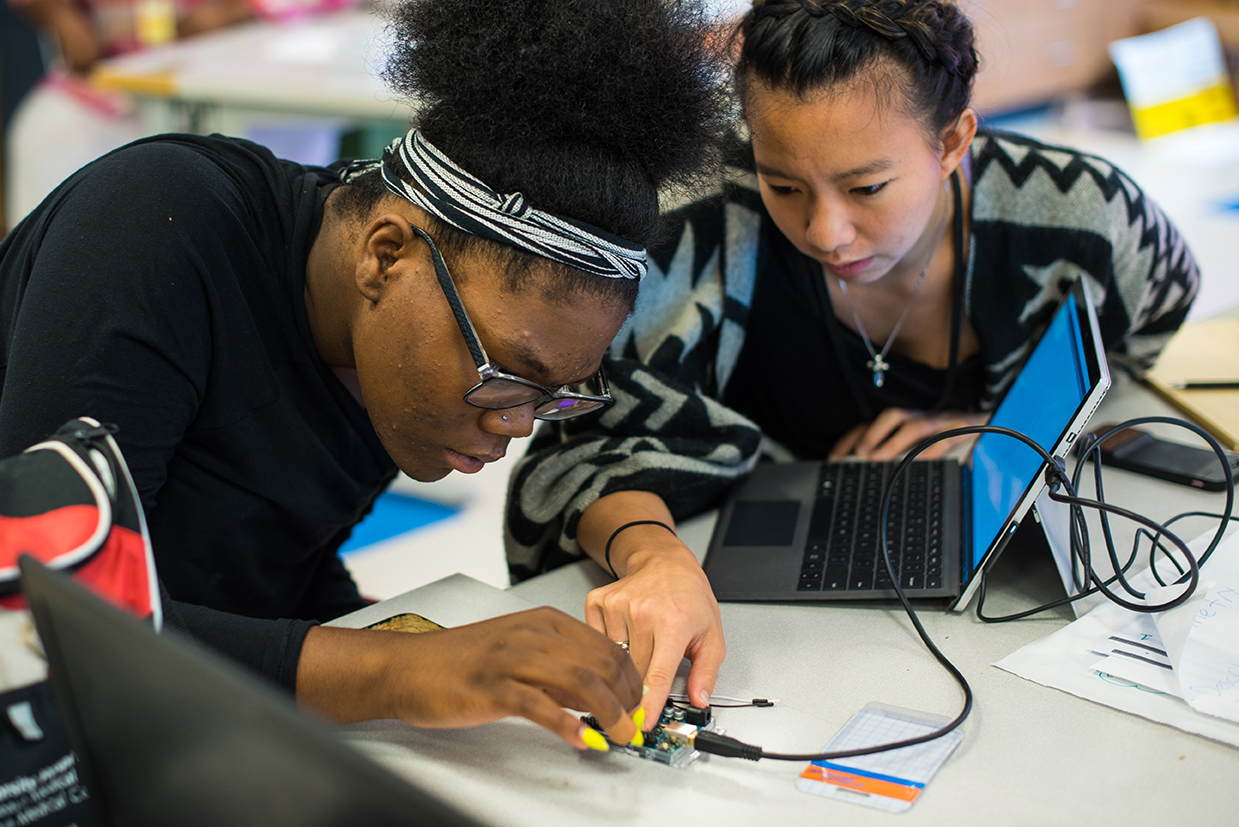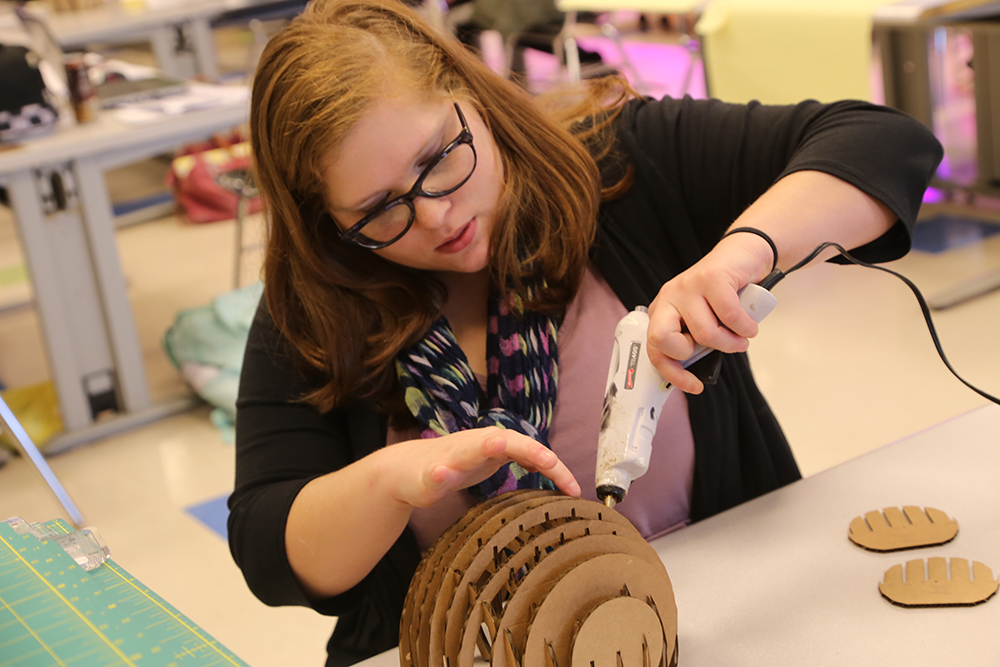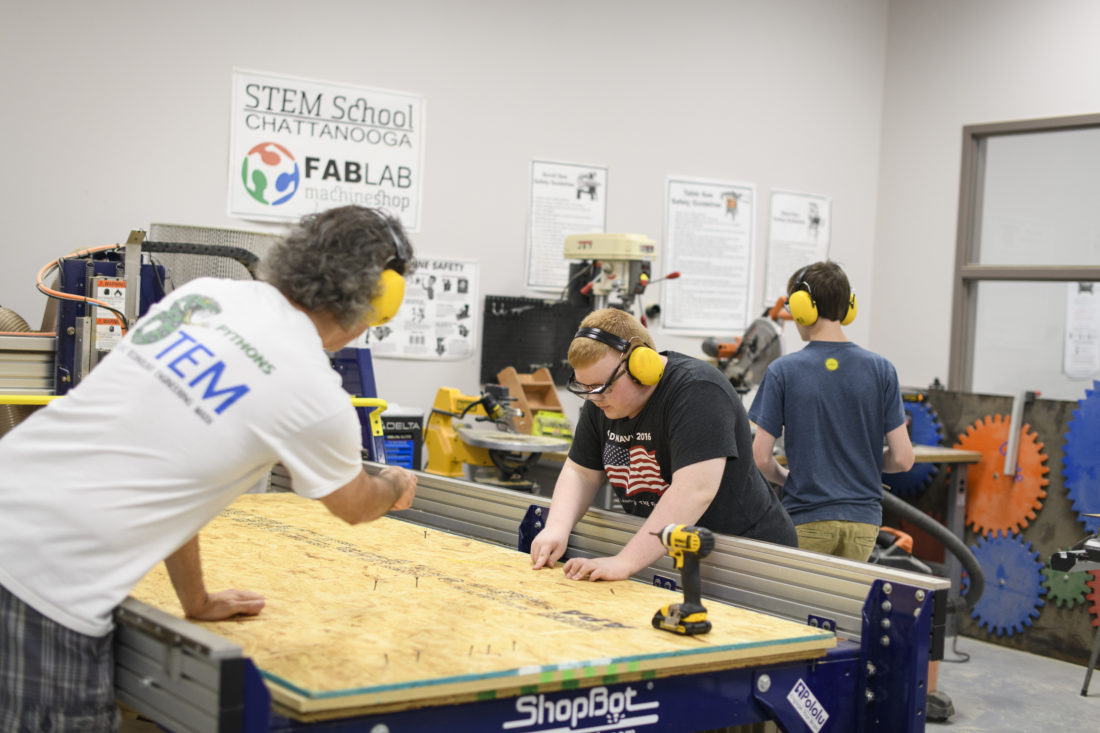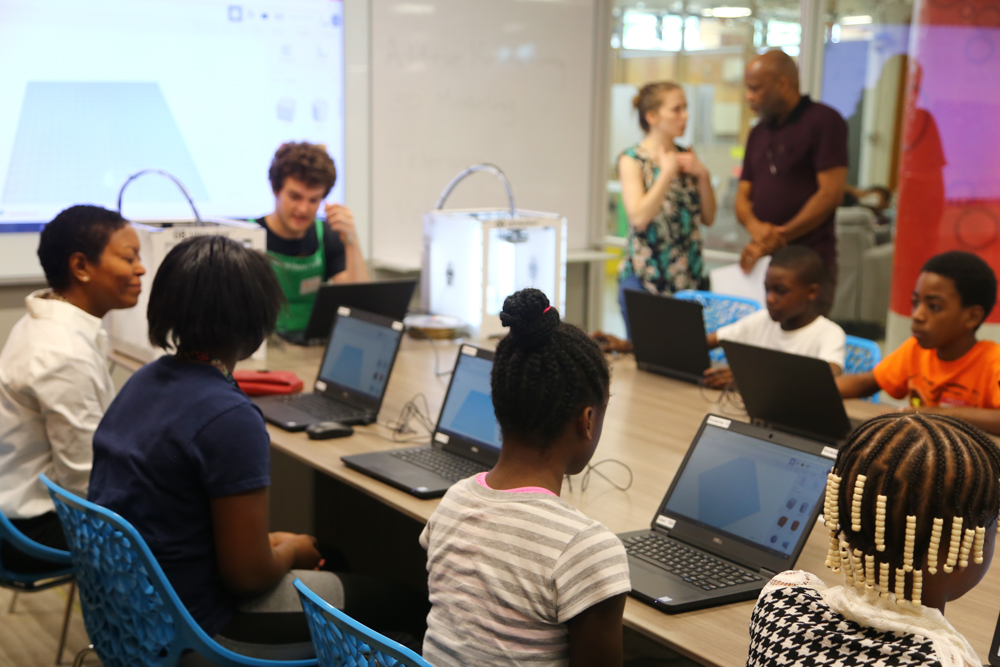The Fab I Can Statements reflect core learning areas across digital fabrication technologies including Design, Programming, Electronics, Modeling, Fabrication, and Safety.
Download the Fab I Can Statements Poster

a formative assessment tool
The Fab I Can Statements can be used as an assessment tool for teachers measuring digital fabrication learning experiences in the K-12 classroom.
The statements codify technological learning objectives and can support national, international, and state standards.
Fab I Can Worldwide
The Fab I Can Statements are being used worldwide to support in-school and out of school learning. For a copy in Arabic, click here.
If you are a community member interested in providing a translation of the Fab I Can Statements into other languages, please contact us.

Precision assembly process with interlocking laser cut parts.

Training on the ShopBot CNC milling machine – with ear and eye protection!

Tutorial on 3D computer modeling for 3D printing.
Design
Design is perhaps the most fundamental of all Fab Lab skills to be learned. Therefore it is often the most difficult to master while also being the most personal and for many the most rewarding. The design statements can be generally understood as progressing from novice to advanced skills, however it should be noted that these statements differ in kind as well as degree.
Design.1 |
I can be responsible for various activities throughout a design process within a group under instructor guidance. | ||
Design.2 |
I can participate in design reviews with prepared presentation materials as well as give and receive feedback from peers. | ||
Design.3 |
I can initiate design processes to generate multiple solutions to problems I have framed for multiple stakeholders. | ||
computer Programming
Computation, especially computational thinking, is important for success across academic subjects, such as using computational tools with geometry to model two and three-dimensional objects. Computation requires the application of creative processes when developing computational artifacts and to think creatively while using computer software and other technology to add logic and behavior to objects.
Programming.1 |
I understand the basic structure of a simple program and can modify values, variables, or other parameters to alter its output, function, or behavior. | ||
Programming.2 |
I can create a program with more than one instruction. | ||
Programming.3 |
I can create a program with multiple instructions and branching elements as well as reading / controlling inputs and outputs on a microcontroller board. | ||
Electronics
Electronics, especially in the area of physical computing, teaches students how to communicate through computers and other components that are responsible for moving and controlling a mechanism or system. Electronics requires knowledge and use of sensors and microcontrollers to translate and process analog data using software as well as using software to control electro-mechanical devices such as motors, servos and other electronic devices.
Electronics.1 |
I can follow instructions to build a simple electrical circuit using conductive material, basic components, and power. | ||
Electronics.2 |
I can follow a schematic diagram and create a circuit including a microcontroller with electronic components. | ||
Electronics.3 |
I can create my own schematic diagrams and use them to build electronic circuits including microcontrollers. | ||
Modeling
The modeling statements reflect the constantly changing nature of design software while promoting long-standing operations and terminology where possible. The statements are built around progressively advancing skills associated with progressively difficult-to-master softwares. Exceptions do exist however and it should be noted that modeling softwares are increasingly merging with programming environments as well as with fabrication tools. Furthermore, online browser-based software introduces additional skills such as account management, file sharing, and collaboration.
Modeling.1 |
I can arrange and manipulate simple geometric elements, 2D shapes, and 3D solids using a variety of technologies. | ||
Modeling.2 |
I can construct compound shapes and multi-part components ready for physical production using multiple representations. | ||
Modeling.3 |
I can define complex systems with parametric relational modeling using generative, algorithmic, or function representation. | ||
fabrication
The fabrication statements reinforce a core tenet of digital fabrication competency which is that one doesn’t learn to master a particular machine or software in isolation, but rather that she must learn patterns of actions and thoughts – workflows – that link together multiple machines, softwares, materials, and more to produce a physical artifact. The statements convey progressively increasing degrees of student autonomy as well as workflow depth for any given project.
Fabrication.1 |
I can follow instructor guided steps that link a software to a machine to produce a simple physical artifact. | ||
Fabrication.2 |
I can develop workflows across four or more of the following: modeling softwares, programming environments, fabrication machines, electronic components, material choices, or assembly operations. | ||
Fabrication.3 |
I can make my own applications, machines, or electronic components to solve new problems and to grow my Fab Lab’s capacity. | ||
safety
The safety statements are an essential guide for individuals to take precaution for their own safety in a lab environment. There is potential risk when working with lab equipment and materials, making safety a critical part of the experience. Each school or space introducing digital fabrication and other equipment and hazardous materials, are mandated to have their own safety guidelines and protocols. The statements of safety here are overarching to ensure safety protocols are included in student learning.
Safety.1 |
I can safely conduct myself in a Fab Lab and observe operations under instructor guidance. | ||
Safety.2 |
I can operate equipment in a Fab Lab following safety protocols. | ||
Safety.3 |
I can supervise others in a Fab Lab and ensure safety protocols are being followed. | ||
